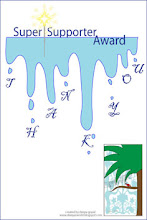The Human Safari!!!
The survival of the very rare stone-age Jarawa tribe of the Andaman Islands is again being threatened by human safaris run by insensitive tour operators.
Survival International announced last week that it has written to eight travel companies that promote visits to, or sightings of, the Jarawa people, urging them to put an immediate stop to their tours. The trips put the tribe, who are likely to have little immunity to common illnesses, at serious risk of disease.
The promotion of tourism to the Jarawa is illegal. Four of the companies stopped promoting Jarawa tourism on their websites after Survival wrote to them. The Indian government also issued a public warning to companies after Survival alerted it to the safaris. Four companies, however, are continuing to promote the tours.
“An illegal highway runs through the Jarawa reserve, bringing in tourists, poachers and settlers. Survival is urging the Government of India to close the road immediately, and to stop intruders trespassing on the Jarawa’s land,” said Stephen Corry, Survival’s director.
“The Jarawa people lived successfully on their island without contact with outsiders for probably about 55,000 years, until 1998. Today, a road runs right through their forest home, and they risk decimation by disease. They call themselves the Ang, which means ‘human being’, yet they are being ogled at like animals in a game reserve.”
“The very last member of the neighboring Bo tribe died in January. We must not allow the same fate to befall the Jarawa, or the world will lose yet another vibrant, knowledgeable and complex part of humankind.”
As per Survival International, the companies that are still advertising tours with sightings of the Jarawa include:
1. Andaman Island Adventure [June 17 update: The page now appears to have been taken down. The company have written to Survival today saying that they will remove the references to the Jarawa from their website];
2. Explore Andaman with Kariappa;
The following companies have stopped promoting tours to the Jarawa on their websites since Survival wrote to them:
1. Andaman and Nicobar Islands Tours and Travels, owned by Barefoot India. Barefoot says it bought the company and website from another tour operator, and did not run the tours that were advertised as the website was ‘“dead” for all practical purposes’. “Barefoot’s Director has explained that they did not have the necessary password to enable them to change the website. Since Survival wrote to the company, the website has been removed.”
2. Sky-Sketch (India)
3. Andaman Island Travels
4. Vicky Tours and Travels
In 2002, the Supreme Court of India ruled that the highway that runs through the Jarawa reserve should be closed, but the government has kept the road open yet. Nevertheless, the Government of India has issued a public warning to tour operators after Survival alerted it to the safaris.
Facts about the Jarawa and Bo Tribes:
The Jarawas number about 320 and live in the thick forests of South and Middle Andaman. They hunt pig and monitor lizard, fish with bows and arrows, and gather seeds, berries and honey. They are nomadic, living in bands of 40-50 people.
In 1998, some Jarawas started coming out of their forest to visit nearby towns and settlements for the first time. The Andaman tribes’ ancestors are thought to have been amongst the first people to migrate successfully from Africa to Asia.
Most of the Bo tribe died of diseases brought by the British in the 19th century. The death of “Boa Sr” in January 2010 meant that what may have been one of the world’s oldest languages, ‘Bo’, also came to an end.



































